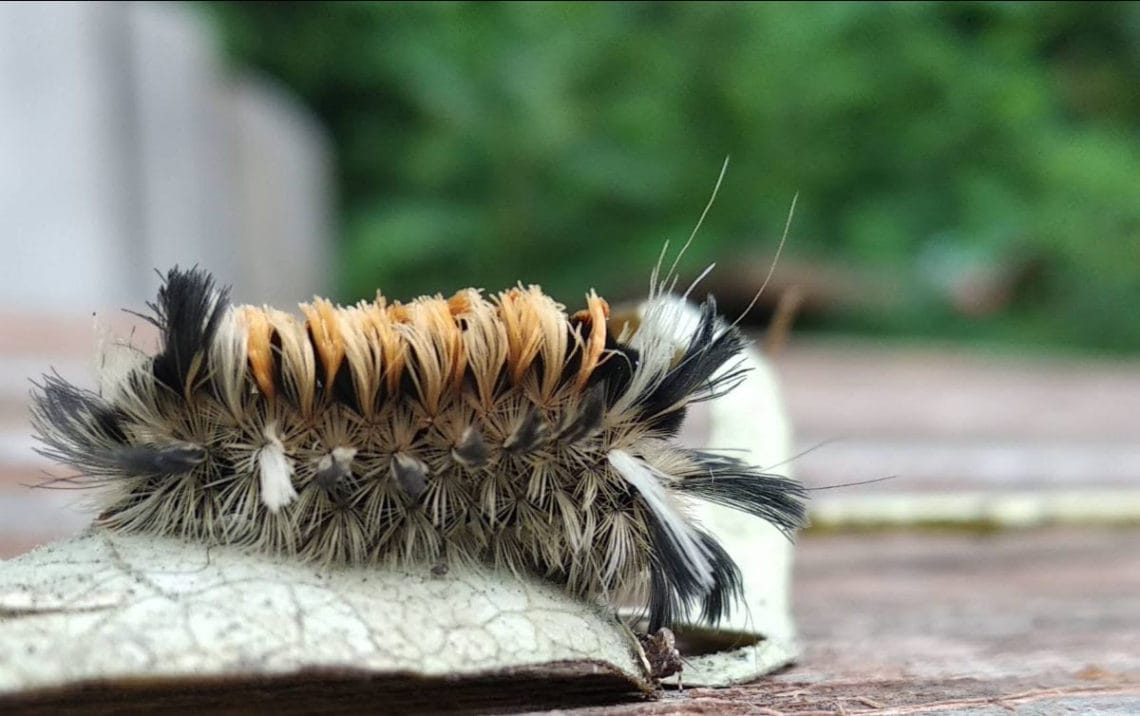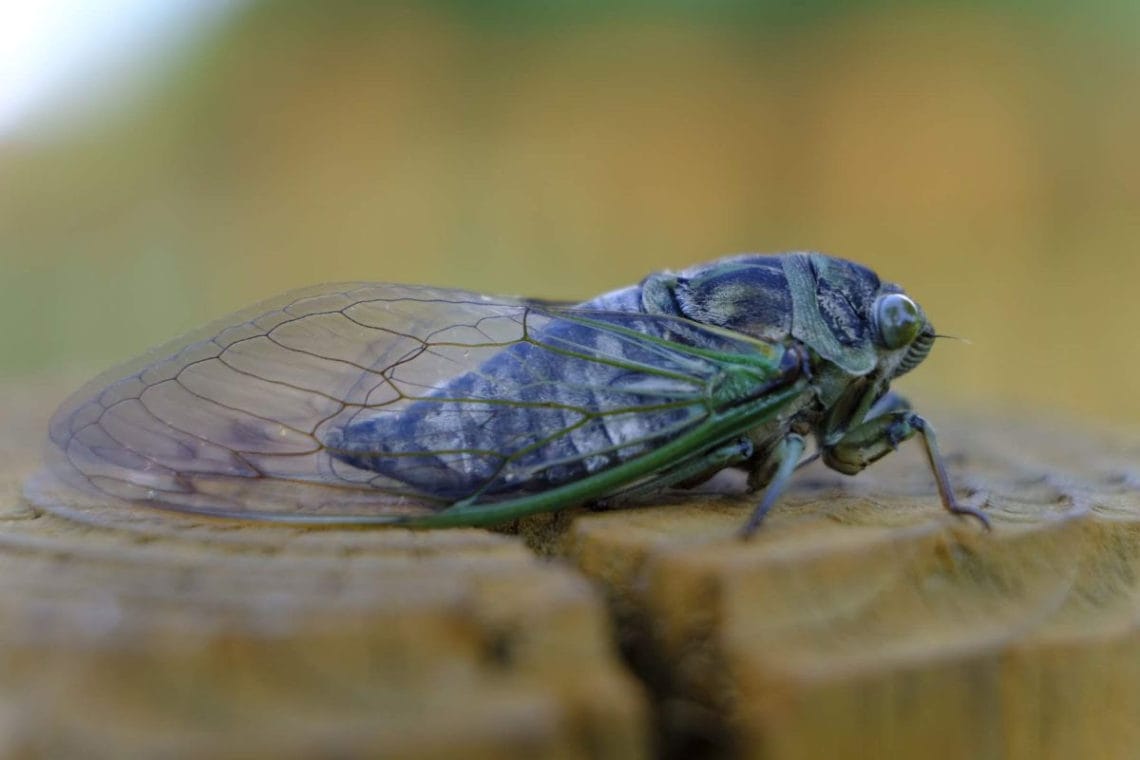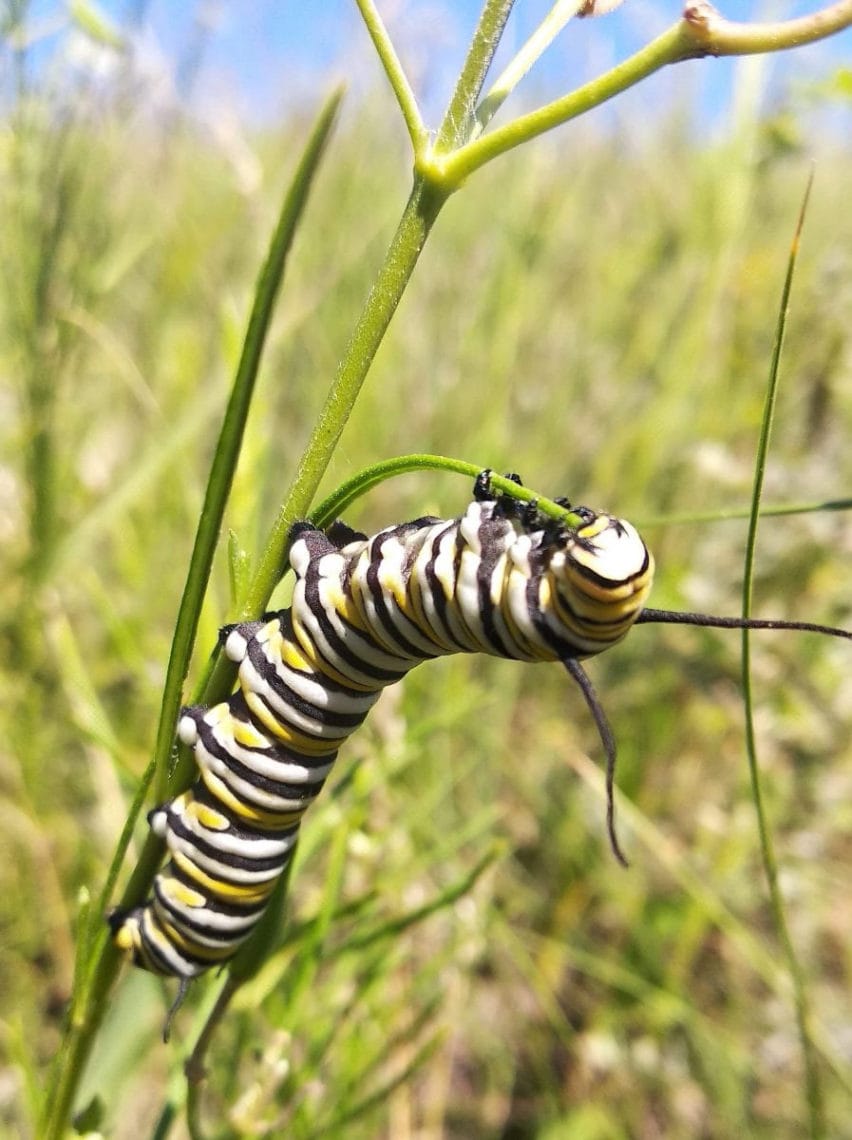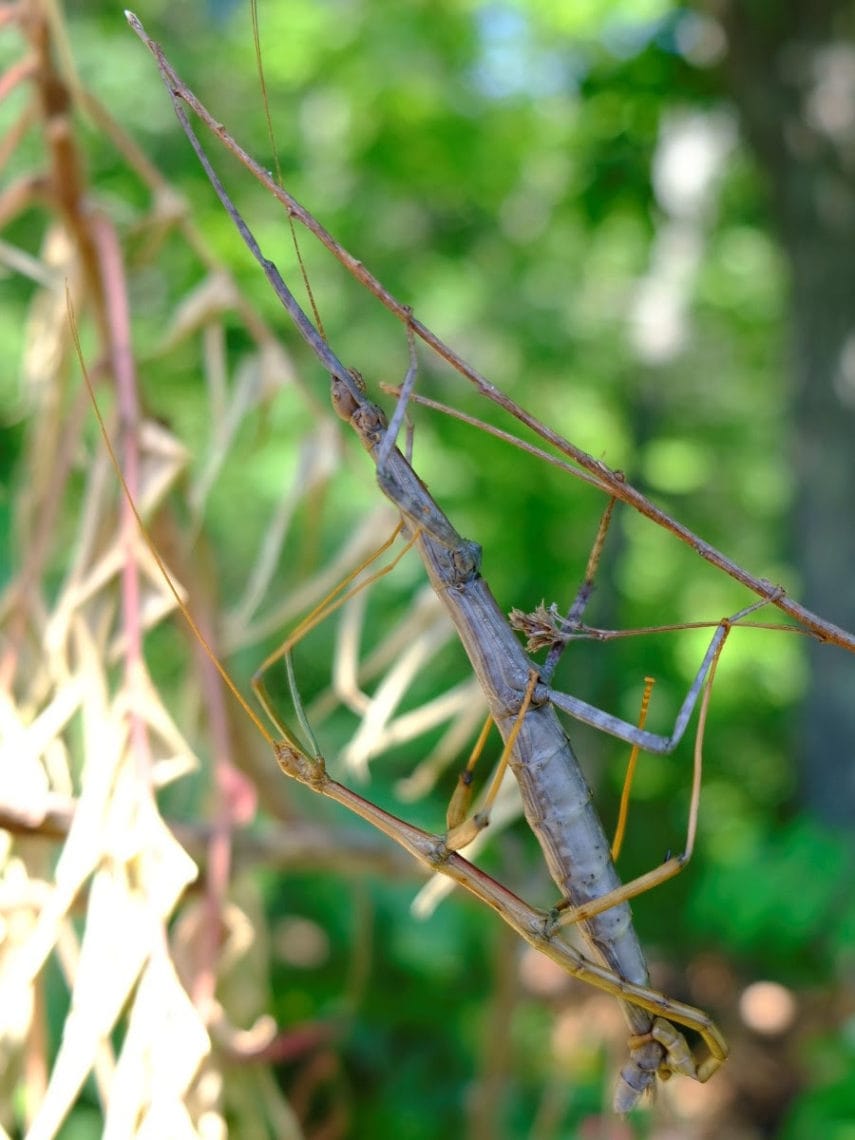When I ask others how their summer is going, I get a lot of responses about the number of insects, or lack thereof (does this only happen to me?). Many people have noticed that they haven’t been spending their summer swatting at mosquitoes. The populations are down this year and it’s likely due to the long, cool spring we had. Others have commented that firefly numbers seem to be down while ticks are on the rise. Since insects seem to be all the buzz lately, let’s talk about bugs you might see if you went outside right now!
If you have ever watched the Addam’s family, you might be reminded of Cousin Itt when looking at this interesting little caterpillar. They’re called milkweed tussock moth caterpillars and as their name implies, they feed on milkweed. Milkweed is filled with toxic chemicals that most critters cannot consume. These caterpillars however, have adapted to the toxins which actually help them against predators.
Scientists have discovered that many insects that feed on milkweed are often a reddish orange and black color (like the monarch butterfly, red milkweed beetle, and milkweed tussock moth). Several bird species that primarily eat insects tend to stay away from insects with these colors because of how unpalatable they are.
As I type this nature update, I can hear a cicada screaming outside of my window. Depending on the time of day/night you read this, you may also hear one. The cicada you hear may be really far away if it sounds faint, but because they can produce sounds over 100 decibels, there’s a good chance you won’t have to go far to hear one. Other sounds over 100 decibels include motorcycles, chainsaws, and car horns. I had a couple fly right by my head at full volume while out with volunteers last week, and let’s just say it caught me a little off-guard.
Despite being noisy, cicadas are actually a very interesting insect with a unique life cycle. I encourage you to look up “Brood XIII” as that is the next 17-year life cycle brood to emerge in southern Wisconsin. The last emergence was 14 years ago in 2007, meaning 2024 will host the next emergence. I’m sure there’s a political joke somewhere in there but I’ll leave that up to your imagination.
Monarch caterpillars are munching away! While out collecting prairie seed with volunteers at Westport Prairie last week, we found a few nibbling on some whorled milkweed. We also found some monarch eggs not far from where this picture was taken. It’s always a treat seeing monarch caterpillars out in the field and I often find myself wondering how many wonderful views these little critters will see during their migration.
Lastly, I’d like to leave you with this photo of two mating walkingsticks. I discovered the pair at Devil’s Lake State Park while out on a hike with my family. It was the first time I had ever seen a walkingstick, let alone two of them! The larger of the two is the female and she had to be close to 4″ long not including the outstretched legs and antennae. They were enormous!
Well, I hope you enjoyed my virtual tour of nature as it’s happening. However you experience the outdoors or nature, be it physical, virtual, spiritual, or anything in between, I encourage you to do it!
If you would like to receive these monthly nature updates in your in-box, sign-up for our latest news.




